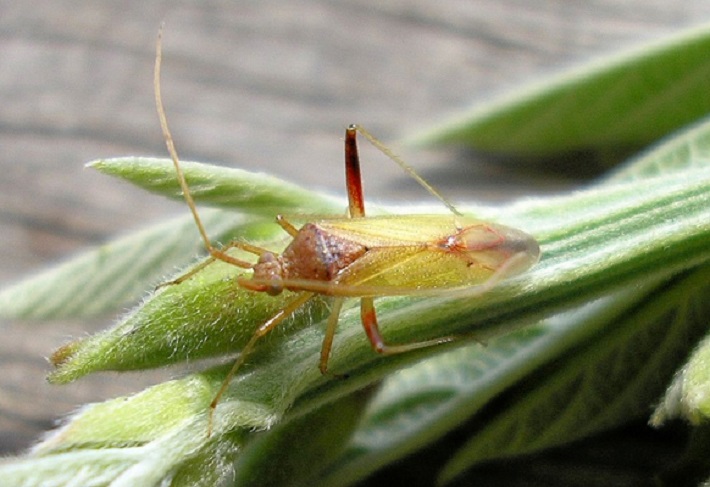A new pheromone lure for attracting green mirid bugs is on the cusp of commercialisation following a licensing deal between the University of New England and EcoKimiko IPM Pty Ltd.
The green mirid (Creontiades dilutus) is a sap-sucking bug that causes multi-millions of dollars in damage to cotton crops even in low numbers. EcoKimiko plans to sell the lures for use in traps, which will inform decisions on pesticide spraying of crops infested with green mirids.
Research work into the pheromone started back in the 2000s when UNE and the Cotton CRC funded a PhD student, Samuel Lowor. Dr Lowor helped to identify the chemical composition of the pheromone, which led to a patent in 2005.
Dr Lower’s supervisors at UNE, Dr Alice Del Socorro and Professor Peter Gregg, with support from the Cotton Research and Development Corporation, later worked on ways to use the information gained from traps baited with the lures for pest management.
They encountered issues with incorporating the volatile pheromone in lures, but eventually found a lure manufacturer in the United States able to formulate the pheromone to enable its controlled release. Lack of a suitable Australian supplier led to them to commercialise it through a company they established, EcoKimiko, following the winding up of the Cotton CRC.
Despite all this effort, Professor Gregg believes “the lure is unlikely to make a fortune. We will sell only a few thousand lures each year for a few dollars each. And there’s no export potential; the green mirid is restricted to Australia. However, we see the commercial development of innovative products like this as a step in establishing both EcoKimiko and UNE as leaders in developing solutions in behavioural manipulation for management of agricultural pests.”
“You look on this as a good example of research with end-user impact, returning value to the Australian cotton industry for its investment in long-term research,” said Professor Heiko Daniel, UNE’s Deputy Vice-Chancellor Research.
“While the University has continued to support the patent itself, it is industry which will benefit from effective monitoring to perfectly time a scaled application of insecticide, while at the same time reducing the impact on the environment.”


